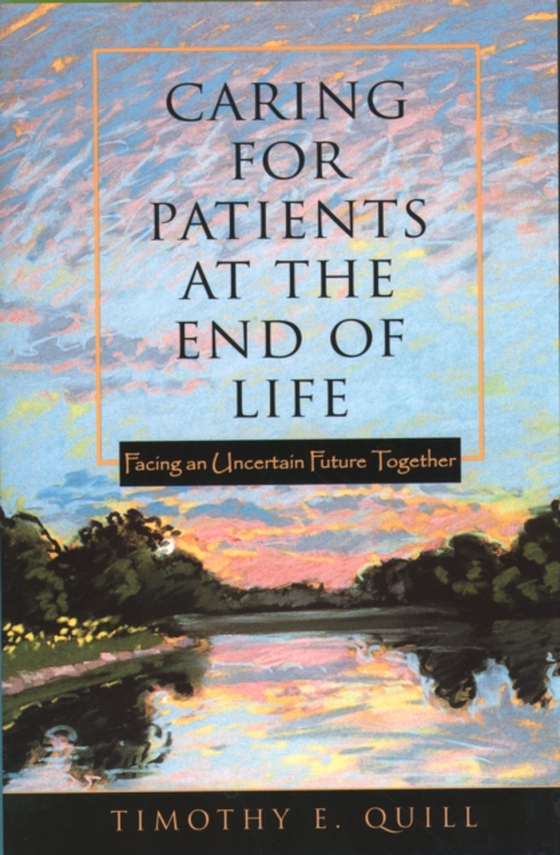
Caring for Patients at the End of Life e-bog
295,53 DKK
(inkl. moms 369,41 DKK)
In Caring for Patients at the End of Life: Facing an Uncertain Future Together, Dr. Quill uses his wide range of clinical experience caring for severely ill patients and their families to illustrate the challenges and potential of end-of-life care. Section one utilizes the near death experiences of two patients to explore values underlying medical humanism, and then presents the case of "e;...
E-bog
295,53 DKK
Forlag
Oxford University Press
Udgivet
22 marts 2001
Genrer
MMC
Sprog
English
Format
pdf
Beskyttelse
LCP
ISBN
9780199748914
In Caring for Patients at the End of Life: Facing an Uncertain Future Together, Dr. Quill uses his wide range of clinical experience caring for severely ill patients and their families to illustrate the challenges and potential of end-of-life care. Section one utilizes the near death experiences of two patients to explore values underlying medical humanism, and then presents the case of "e;Diane"e; to explore the fundamental clinical commitments of partnership and non-abandonment. Section two explores, illustrates, and provides practical guidance for clinicians, patients, and families about critical communication issues including delivering bad news, discussing palliative care, and exploring the wish to die. In section three, difficult ethical and policy challenges inherent in hospice work, including the rule of double effect, terminal sedation, and physician-assisted suicide, are explored using a mix of real cases and an analysis of underlying clinical, ethical, and policy issues. In a final chapter, Dr. Quill discusses the tragic death of his brother which occurred as this book was being completed, and how his family made the most emotionally challenging decisions of their lives. Dr. Quill exposes readers to an internally consistent and practical way of thinking by simultaneously embracing the potential of palliative care, and also acknowledging that it has limitations. His philosophy of offering forthright discussions with patient and family, mutual decision-making, ensuring medical and palliative care expertise and of committing to see the dying process through to the patient's death is vividly illustrated.
 Dansk
Dansk

